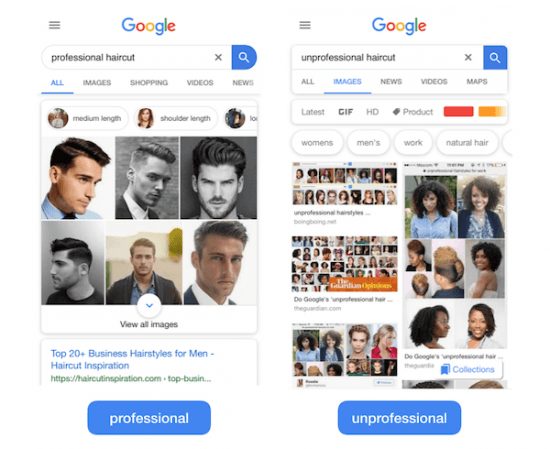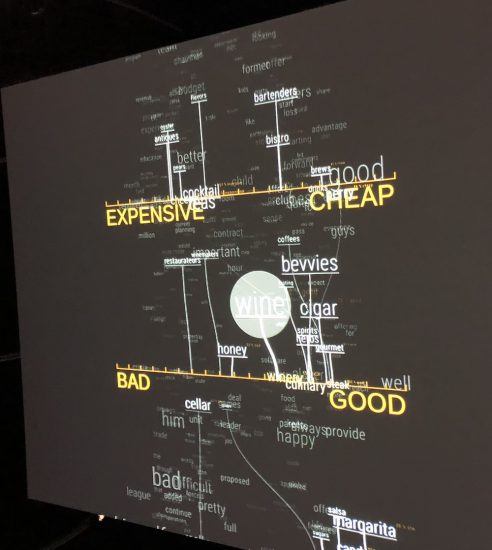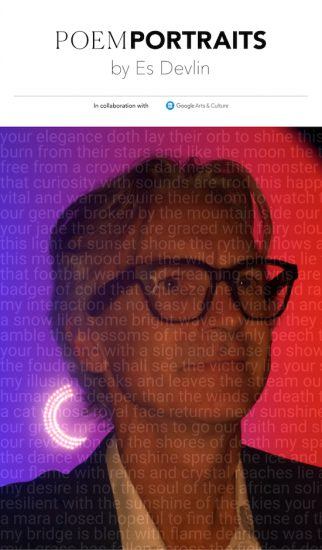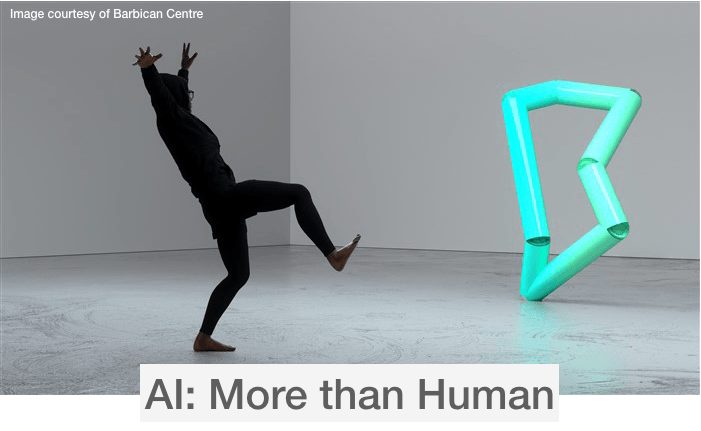The Barbican has put on an exhibit entitled “AI: More than Human,” that runs from May 16 through August 26, 2019. I was lucky to be invited to a private viewing, with a close-up chat with one of the curators, Dr Suzanne Livingstone (the other curator being Maholo Uchida). In the pre-talk with Dr Livingstone, we explored the current boundaries and challenges of AI. For example, we heard how the Google algorithm exhibits distinct bias when you type in “professional haircut” and “unprofessional haircut.”

The result? White men = professional; black women = unprofessional. Clearly, we need to find ways for AI to flag and hopefully fix bias. The Barbican show presents work by Joy Buolamwini: AI, Ain’t I A Woman? which shows how facial recognition doesn’t work well when identifying black women.
The history of AI
The Barbican exhibit educates us on the path of AI going back several centuries until today; and it includes a number of interactive elements. Overall, the spirit of the exhibit is positive about AI and shows how AI is being deployed differently around the world, in different cultures and in different sectors. If fear of AI is an ongoing consideration in the West, in the East, robots are more considered like a useful partner. Dr Livingstone says in a promotional video, “We are seeing [the application of AI] moving from problem solving in specific cases to becoming a much more interconnected system … We can think of this more as a global brain… something we’ll be drawing from and uploading to continually.”
AI & Gaming
Perhaps because it’s mere entertainment — and therefore freer of regulations — there are interesting early deployments of AI in games and gaming. I test drove a driving game that analyzes the emotions (sadness, disgust, surprise, fear, anger, joy…) in my face with Affectiva technology while driving an electronic car with rather unpredictable controls.
AI & Human
One of the most sophisticated exhibits, in my mind, was Alter 3. A humanoid AI, developed by Hiroshi Ishiguro, Takashi Ikegami and Itsuki Doi, Alter moves its hands (and fingers) with great dexterity. The machine essentially learns through interaction with what’s happening around it.
AI & Creativity
One of the unresolved questions is whether AI can be creative? As the exhibit implicitly suggests, the role of AI in creativity is most likely in partnership with humans, not as a replacement thereof. One exhibit, Google PAIR’s project Waterfall of Meaning, shows how machines draw associations to a specific word. Here is what happened around the word: “wine” (encircled).

Outside the exhibit are still other stands and installations in the Barbican. I was attracted to PoemPortraits, done in collaboration with Google Arts & Culture, where the machine creates poetry whose words are overlaid on an image taken in a photo booth. On the basis of a ‘donated’ word that you choose, the algorithm generates a unique poem portrait. The poems are created based on a learning data set of over 20 million words of 19th century poetry. Here was mine.

My poem, based on the word, elegance:
Your elegance doth lay their orb to shine
This pizza stream with stars and shadows stand
All in all, if you’re interested in AI and its interplay in our world, this is a worthy exhibit to check out.
Thanks Buji for the invitation and to Linklaters for hosting.
N.B. The Barbican site comes with a chirpy chatbot (via FB Messenger) to ask you and prod you on several topics around AI. Take a look and try it out yourself.











